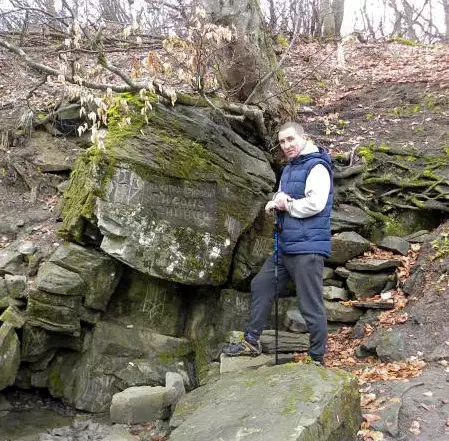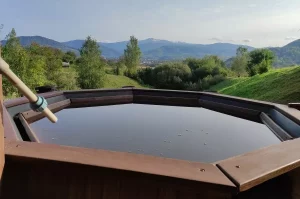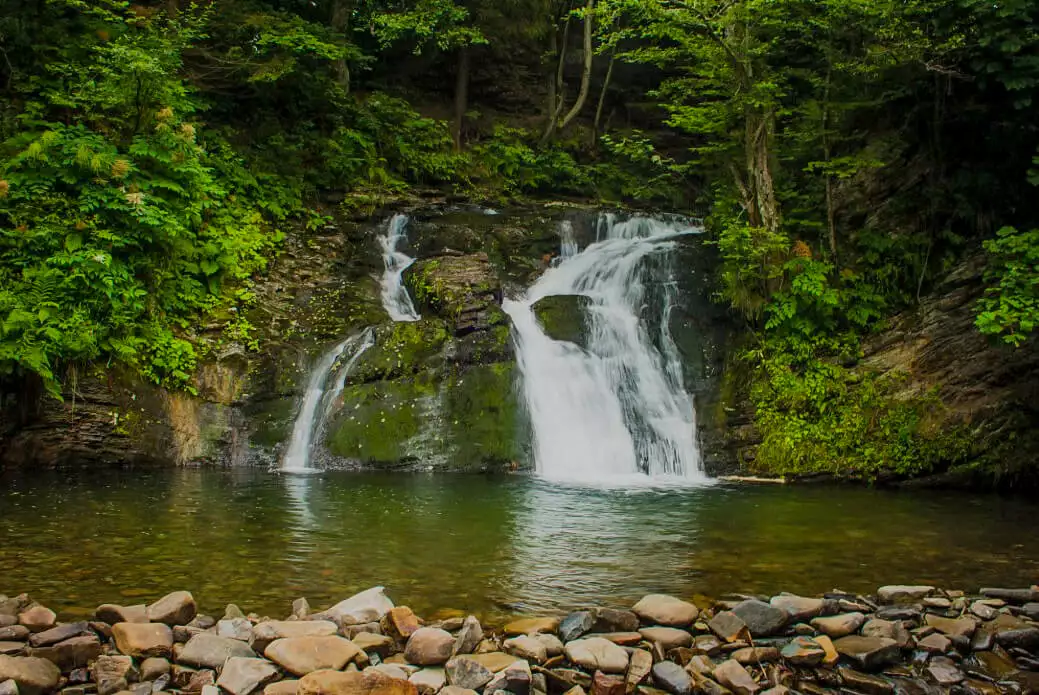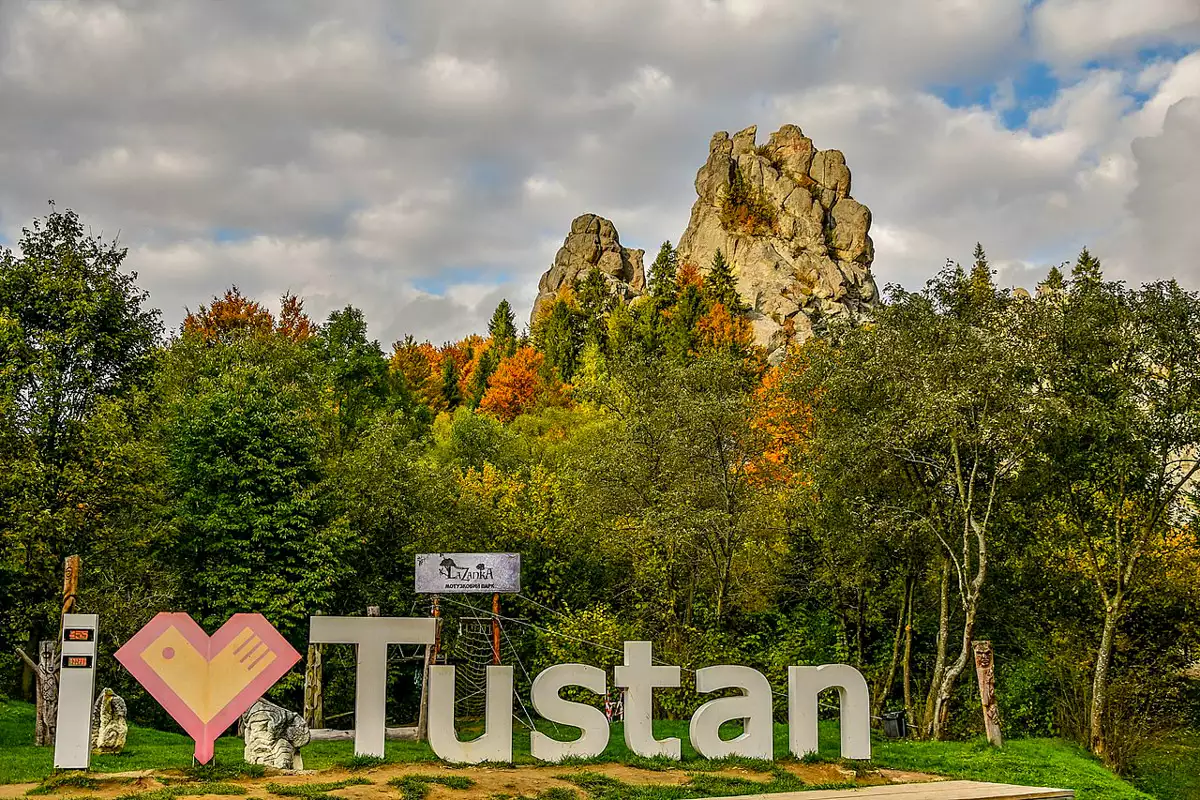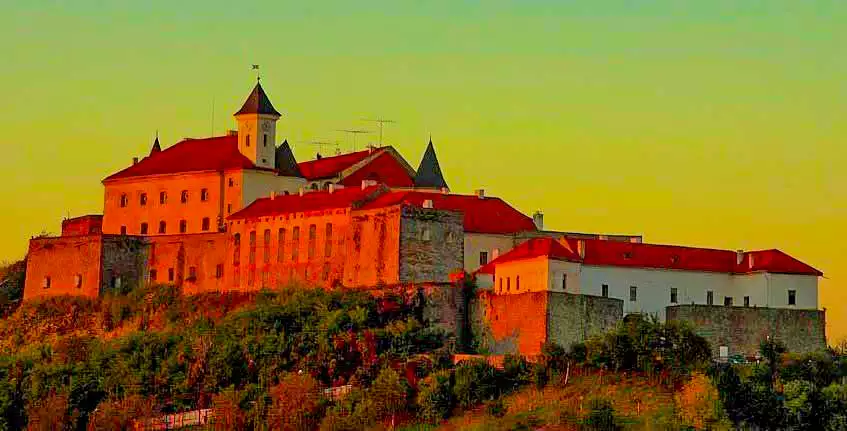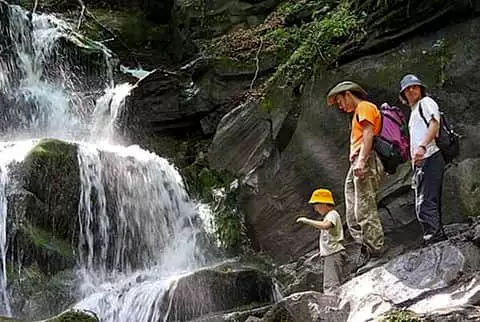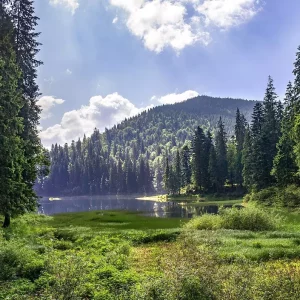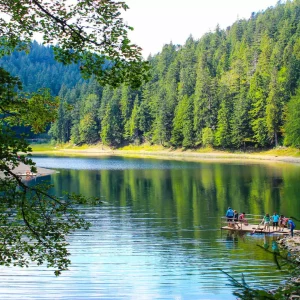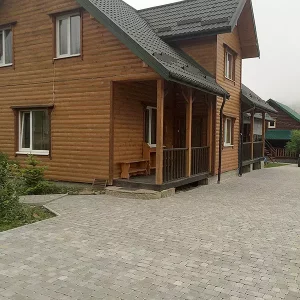People have settled on the territory of the present urban village of Slavsko since ancient times. This is confirmed by the findings of archaeologists – flint tools of the Neolithic era.
According to some researchers, the name of the village comes from the river Slavka. According to another version, the village got its name from the nickname “glorious” which the local residents called the soldiers of Prince Svyatoslav Volodymyrovych, who was killed over the Opir River between Skole and Grebenov in the course of fratricidal princely feuds in 1015. It was the prince’s soldiers who decided to stay in these picturesque places and are considered, according to legends and traditions, to be the founders of the village.
However, the first written mention of Slavsko dates back to a much later date, namely 1483.
The history of this village is extremely complex, full of struggles and bloody wars. Polish feudal lords, Hungarian and Tatar conquerors regularly brought woe to these lands during their stay as part of the Polish-Lithuanian Commonwealth. Local residents have been fighting for the right to live freely for centuries. Slavsko became one of the epicenters of the opryshk movement, which for more than three centuries were a real horror for local oppressors. Among the most famous rebels, we should mention the former shepherd Andrii Dziganovich, whose squad fought in these places for a whole decade from 1671 to 1681. On the mountain, which is now called Dovbushanka, in the 18th century, Oleksa Dovbush’s hoards hid.
After the first division of the Polish-Lithuanian Commonwealth in 1772, Slavsko, together with all of Galicia, became part of the Habsburg Empire (since 1804, the Austrian Empire). In 1820, Polish Count Potocki became the owner of Slavsko, who intensified the exploitation of local peasants. All this caused a social explosion in the form of an anti-feudal uprising in 1824-1826 in Skolivshchyna. After the revolution of 1848-1849, the lordship and many other feudal remnants were abolished, which led to the acceleration of the economic development of Slavsko. In 1887, a railway was laid through Slavsko, which became a real epochal change in the life of local residents and further accelerated the development of the village.
During the First World War, Slavsko found itself in the very epicenter of the fiercest hostilities, especially in 1915. During and for a long time after the end of the Second World War, soldiers of the Ukrainian insurgent army actively led the struggle for the independence of Ukraine in Slavsko.
Nowadays, Slavsko is known as a famous tourist center. The development of tourism in Slavsko began as far back as the 18th century. This was facilitated by the healing nature of the Carpathians.
In the 19th and the first half of the 20th centuries, thanks to the joint efforts of entrepreneurs Gredel and Shmidta, Slavsko was transformed into a real tourist Mecca of the Carpathians. Thanks to their efforts, the first holiday homes were built, where thousands of tourists from all over Europe came to enjoy the mountain views and clean air. In addition, in the 1920s and 1930s, Polish builders ordered the Gredels and Schmidts to build the first ski lifts and ski jumps on Ilza and Pogar mountains. The mechanisms were driven by horse traction. Later they were replaced by diesel engines. During Slavsko time as part of the USSR in the 1970s and 1980s, more than 10 lifts were built here and ski schools were founded.
After Ukraine gained independence in 1991, Slavsko developed primarily as a famous ski resort. More detailed information about the ski slopes of Slavsko can be found on the corresponding page.


